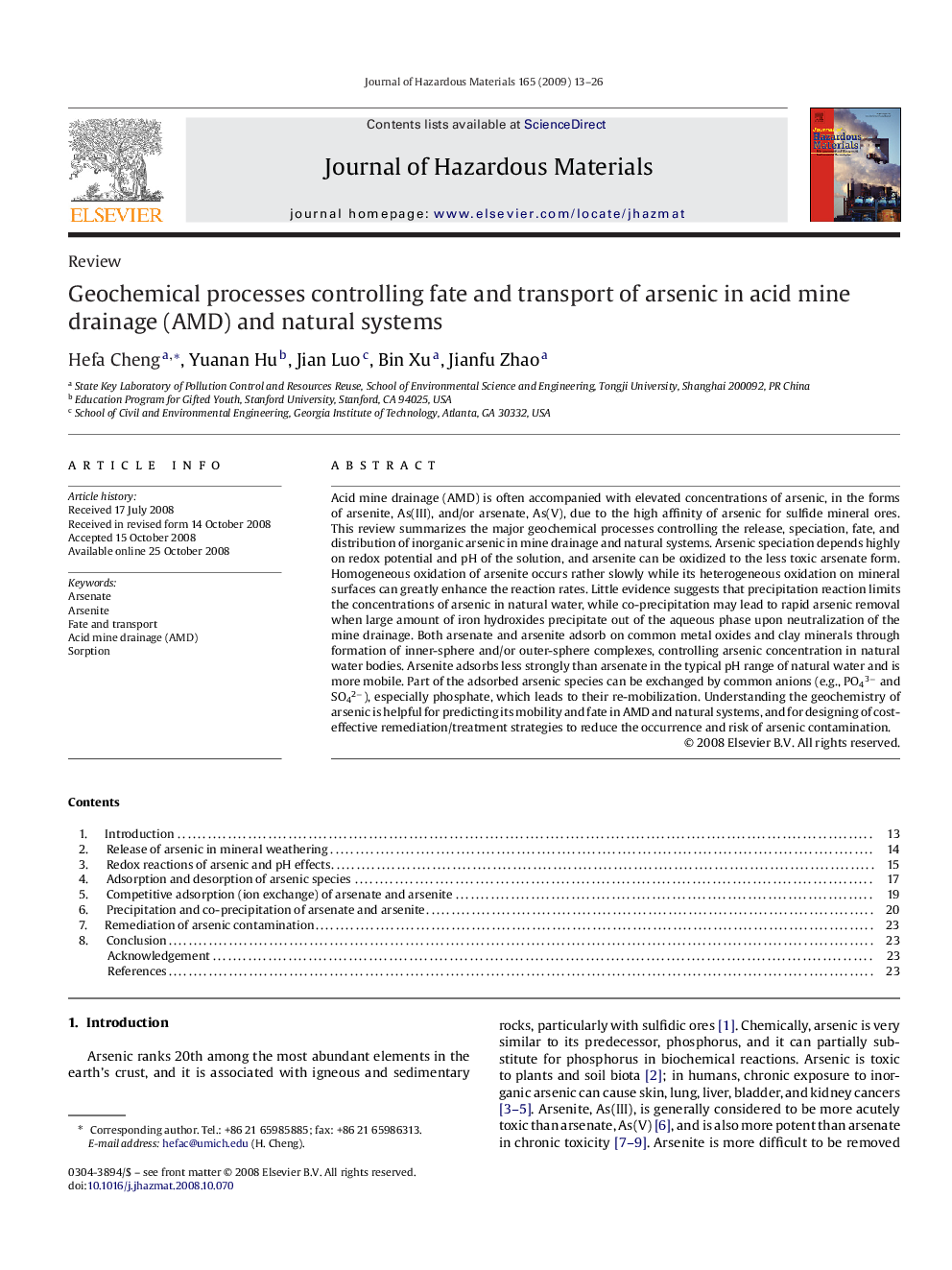| Article ID | Journal | Published Year | Pages | File Type |
|---|---|---|---|---|
| 582240 | Journal of Hazardous Materials | 2009 | 14 Pages |
Abstract
Acid mine drainage (AMD) is often accompanied with elevated concentrations of arsenic, in the forms of arsenite, As(III), and/or arsenate, As(V), due to the high affinity of arsenic for sulfide mineral ores. This review summarizes the major geochemical processes controlling the release, speciation, fate, and distribution of inorganic arsenic in mine drainage and natural systems. Arsenic speciation depends highly on redox potential and pH of the solution, and arsenite can be oxidized to the less toxic arsenate form. Homogeneous oxidation of arsenite occurs rather slowly while its heterogeneous oxidation on mineral surfaces can greatly enhance the reaction rates. Little evidence suggests that precipitation reaction limits the concentrations of arsenic in natural water, while co-precipitation may lead to rapid arsenic removal when large amount of iron hydroxides precipitate out of the aqueous phase upon neutralization of the mine drainage. Both arsenate and arsenite adsorb on common metal oxides and clay minerals through formation of inner-sphere and/or outer-sphere complexes, controlling arsenic concentration in natural water bodies. Arsenite adsorbs less strongly than arsenate in the typical pH range of natural water and is more mobile. Part of the adsorbed arsenic species can be exchanged by common anions (e.g., PO43â and SO42â), especially phosphate, which leads to their re-mobilization. Understanding the geochemistry of arsenic is helpful for predicting its mobility and fate in AMD and natural systems, and for designing of cost-effective remediation/treatment strategies to reduce the occurrence and risk of arsenic contamination.
Related Topics
Physical Sciences and Engineering
Chemical Engineering
Chemical Health and Safety
Authors
Hefa Cheng, Yuanan Hu, Jian Luo, Bin Xu, Jianfu Zhao,
